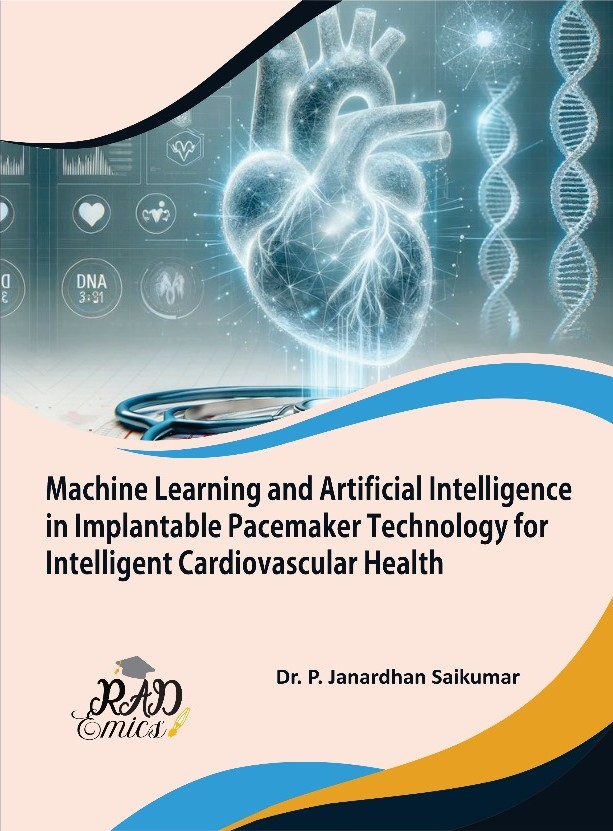
Peer Reviewed Chapter
Chapter Name : Wearable and Implantable Device Communication Using AI Optimized Low Energy Protocols in Cardiovascular Health
Author Name : Shaik Balkhis Banu, Shaik Lal John Basha
Copyright: ©2025 | Pages: 34
DOI: 10.71443/9789349552586-12
Received: WU Accepted: WU Published: WU
Abstract
The integration of wearable and implantable devices has redefined cardiovascular healthcare by enabling continuous, real-time monitoring of critical physiological parameters beyond clinical settings. However, the demand for uninterrupted telemetry presents significant challenges related to energy efficiency, secure data transmission, and adaptive protocol design. Conventional static wireless protocols often fail to meet these stringent requirements, leading to unnecessary power drain and potential security gaps. Recent advances in artificial intelligence offer a pathway to dynamically optimize low-energy communication stacks, tailoring transmission schedules, encryption schemes, and data prioritization in response to real-world conditions and patient-specific contexts. This chapter explores the foundational principles of wearable and implantable device communication, the role of AI in enhancing protocol adaptivity, and the strategies for balancing battery longevity with robust, secure data exchange. Key areas discussed include lightweight cryptography, secure key management, AI-enabled threat detection, privacy preservation methods, and resilience to communication failures. Through a comprehensive examination of system architectures, cross-layer co-design, and experimental validation frameworks, this work highlights how AI-driven low-energy protocols can address critical research gaps and guide the next generation of safe, reliable, and patient-centric cardiovascular monitoring solutions.
Introduction
 Continuous monitoring has become a cornerstone of modern cardiovascular healthcare, driven by advances in both wearable and implantable device technologies [1]. Pacemakers, implantable loop recorders, and defibrillators now work alongside smartwatches, chest patches [2], and sensor-embedded textiles to deliver real-time insights into heart function. Together, these devices collect detailed physiological signals such as ECG [3], heart rate, and arrhythmia events, supporting early detection and personalized care outside of hospital settings [4]. Yet, the promise of constant connectivity depends on reliable communication systems that operate within the tight energy budgets and safety requirements of miniaturized medical electronics [5].
Communication between implants and external devices is inherently constrained by the need to preserve battery life [6]. For implanted cardiac monitors, surgical battery replacement can pose significant patient risk and cost [7]. Similarly, frequent recharging of wearable sensors can disrupt user compliance and limit long-term adoption [8]. Conventional telemetry protocols such as Bluetooth Low Energy (BLE) or proprietary RF solutions provide baseline functionality but are often designed for consumer devices rather than body-worn medical systems [9]. The unique signal propagation challenges within human tissue, coupled with the need for uninterrupted monitoring, make static communication schemes suboptimal in practice [10].
Recent advances in artificial intelligence provide new opportunities to overcome these challenges by enabling adaptive, context-aware protocol optimization [11]. AI can help devices learn from patient-specific patterns [12], predict communication needs, and dynamically adjust parameters such as transmission frequency, packet size, and modulation schemes [13]. These capabilities make it possible to reduce unnecessary data exchange, minimize energy consumption [14], and extend device lifespans while maintaining the clinical fidelity required for life-critical cardiac monitoring [15].